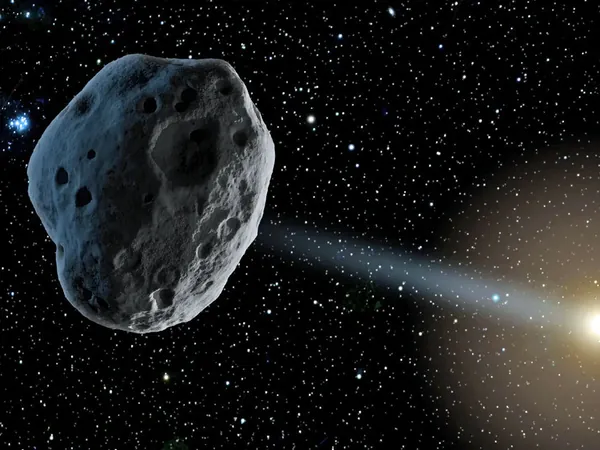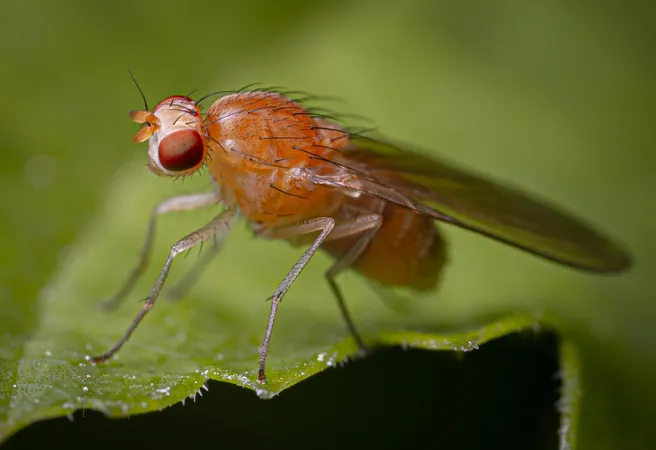
Hayabusa2 Faces Unprecedented Challenge with Smaller, Faster Asteroid KY26!
2025-09-20
Author: Wei Ling
Hayabusa2's Bold New Quest
Japan's Hayabusa2 spacecraft, celebrated for its groundbreaking sample return from asteroid Ryugu in 2020, is gearing up for a thrilling new chapter. The target? Asteroid 1998 KY26, set for a close encounter in 2031. However, recent astronomical findings have turned expectations upside down—this cosmic body is not just smaller, but it's whisking through space faster than we thought!
Astounding Discoveries: Reality vs. Expectations
Originally estimated to be about 30 meters wide and rotating every 10 minutes, KY26 is now revealed to be a mere 11 meters across with a dizzying spin rate of just 5 minutes per rotation! These eye-opening revelations were released by astronomers using the European Southern Observatory’s cutting-edge Very Large Telescope (VLT) in Chile. Toni Santana-Ros, the lead study astronomer from the University of Alicante, stated, "The reality of the object is completely different from what it was previously described as." This unexpected twist poses a fresh set of complexities for Hayabusa2 as it embarks on its journey.
A Mission Like No Other: Navigating Uncharted Territory
After its successful mission to Ryugu, Hayabusa2 was given the green light to extend its odyssey towards KY26. While it has sufficient fuel, the new dimensions and speed of this asteroid inject uncertainty into efforts to orbit and potentially land on its surface. The facts are staggering: the size of KY26 rivals that of the spacecraft itself, making close proximity an intricate challenge. As astronomer Olivier Hainaut noted, "The smaller size and faster rotation will make Hayabusa2's visit even more interesting, but also much more challenging."
Why KY26 Matters: Scientific Significance and Future Impact
Despite the daunting challenges ahead, the scientific potential of studying KY26 is monumental. Its reflective surface hints it could be a solid rock—or possibly even a loosely packed rubble pile. Understanding such asteroids is pivotal not just for enriching planetary science but also for advancing planetary defense strategies. After all, smaller asteroids have posed risks to Earth, such as the infamous Chelyabinsk event in 2013.
As Santana-Ros highlighted, "We have never seen a 10-meter-size asteroid in situ, so we don't know what to expect and how it will look." This mission could pave the way for vital insights into the structure and behavior of small asteroids in space, directly impacting future endeavors like asteroid mining and defense.
A Historic Mission Awaits!
This latest phase of Hayabusa2’s journey is set to make space exploration history by characterizing the smallest asteroid ever targeted by a spacecraft. While the newfound challenges may complicate the road ahead, they also promise to deepen humanity's comprehension of near-Earth objects. Buckle up—an exciting voyage of discovery awaits!




 Brasil (PT)
Brasil (PT)
 Canada (EN)
Canada (EN)
 Chile (ES)
Chile (ES)
 Česko (CS)
Česko (CS)
 대한민국 (KO)
대한민국 (KO)
 España (ES)
España (ES)
 France (FR)
France (FR)
 Hong Kong (EN)
Hong Kong (EN)
 Italia (IT)
Italia (IT)
 日本 (JA)
日本 (JA)
 Magyarország (HU)
Magyarország (HU)
 Norge (NO)
Norge (NO)
 Polska (PL)
Polska (PL)
 Schweiz (DE)
Schweiz (DE)
 Singapore (EN)
Singapore (EN)
 Sverige (SV)
Sverige (SV)
 Suomi (FI)
Suomi (FI)
 Türkiye (TR)
Türkiye (TR)
 الإمارات العربية المتحدة (AR)
الإمارات العربية المتحدة (AR)